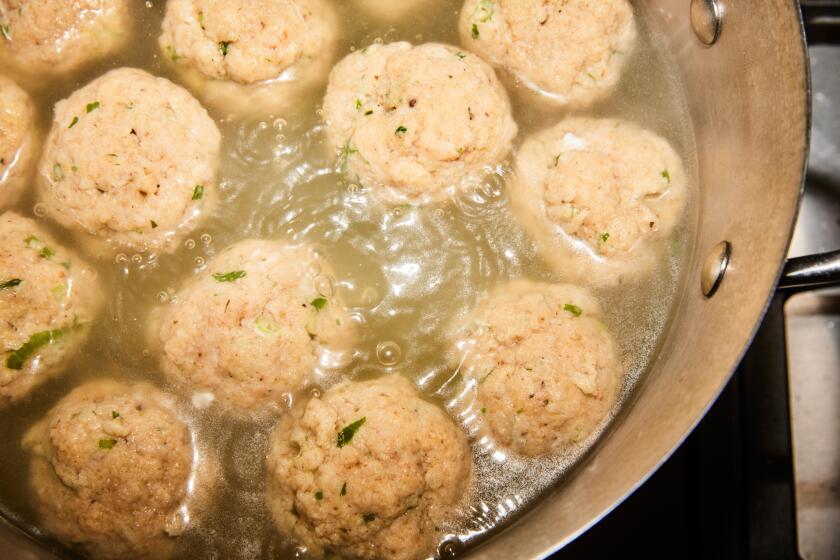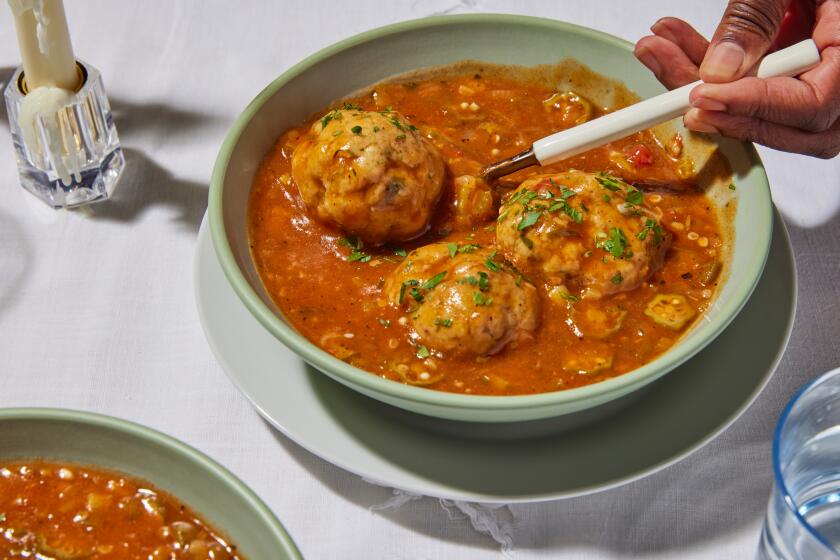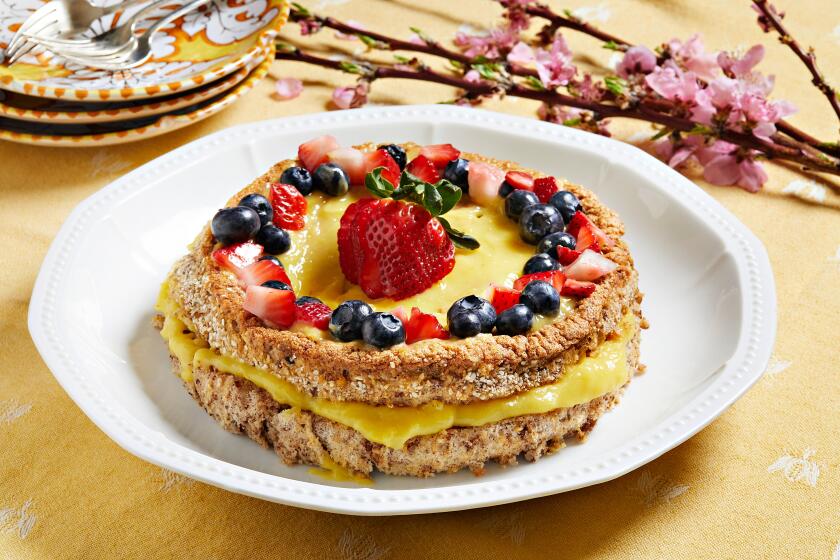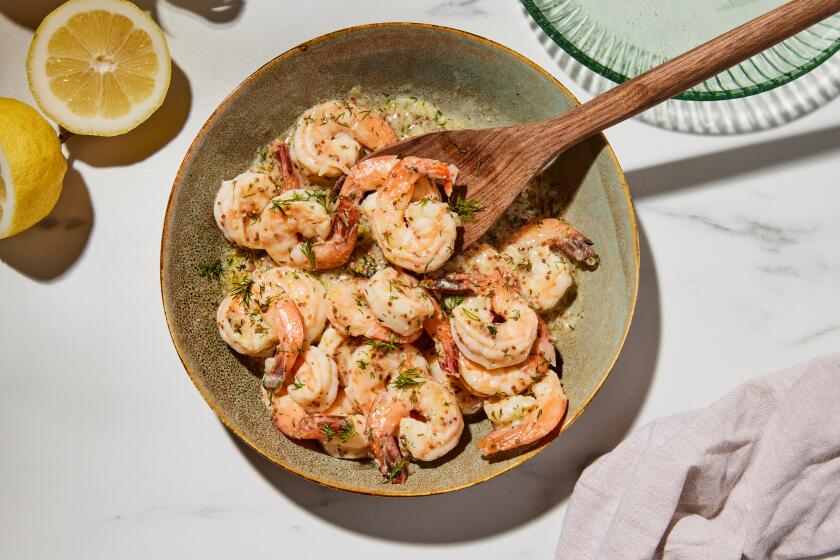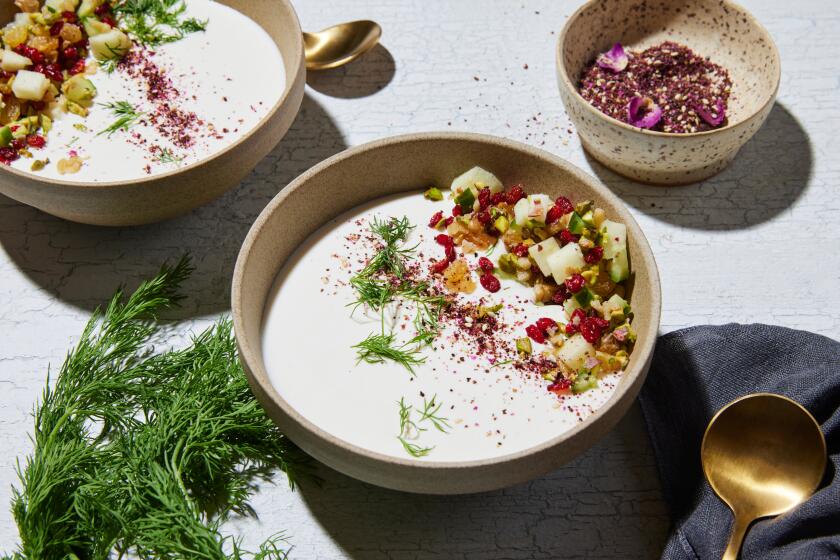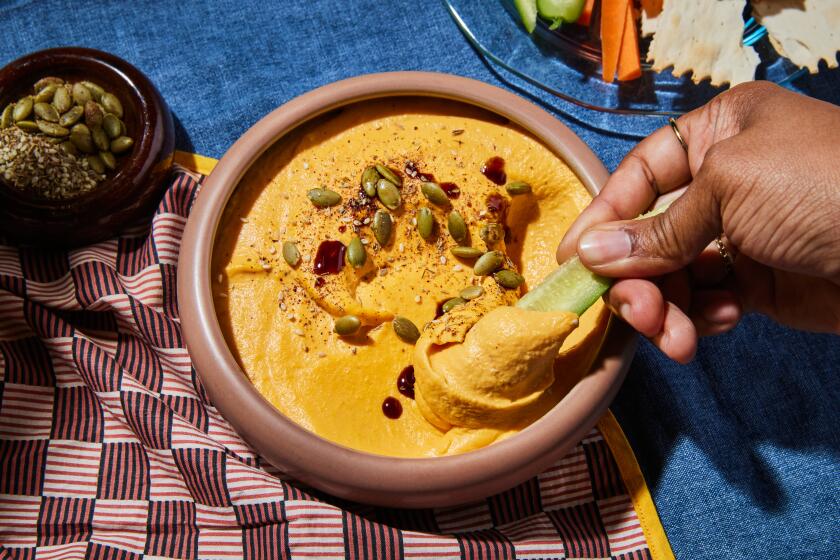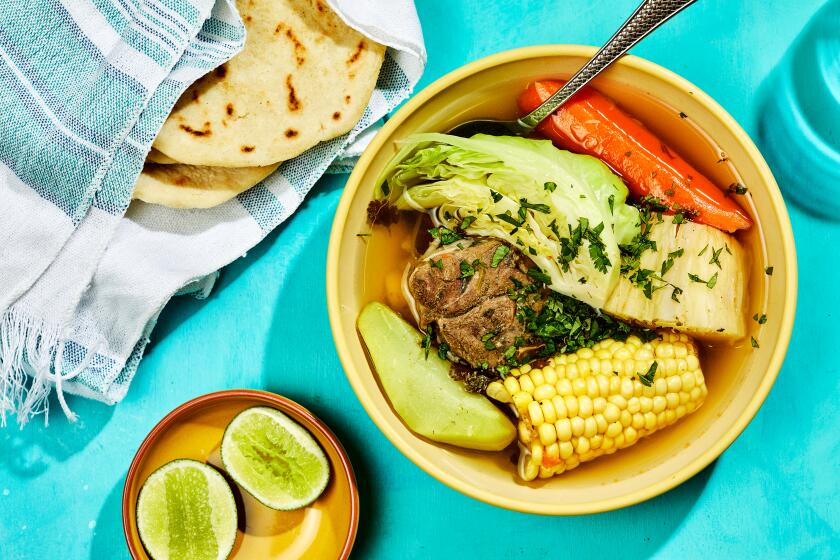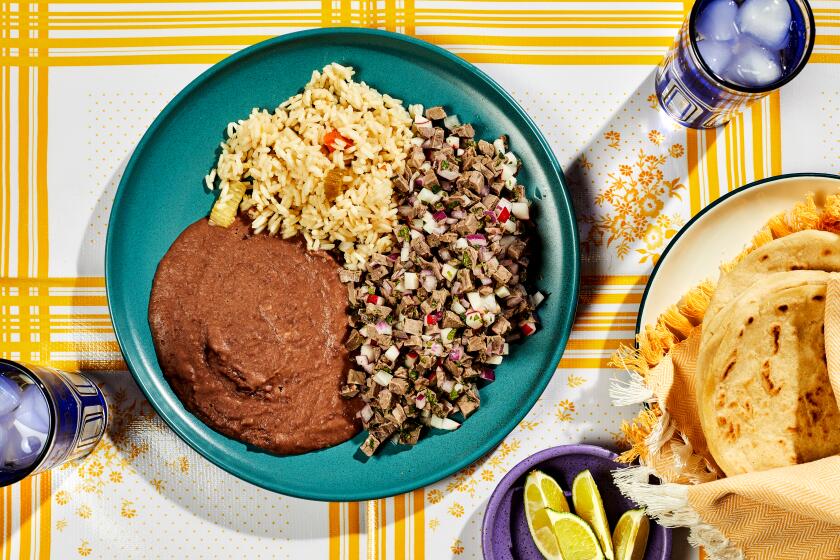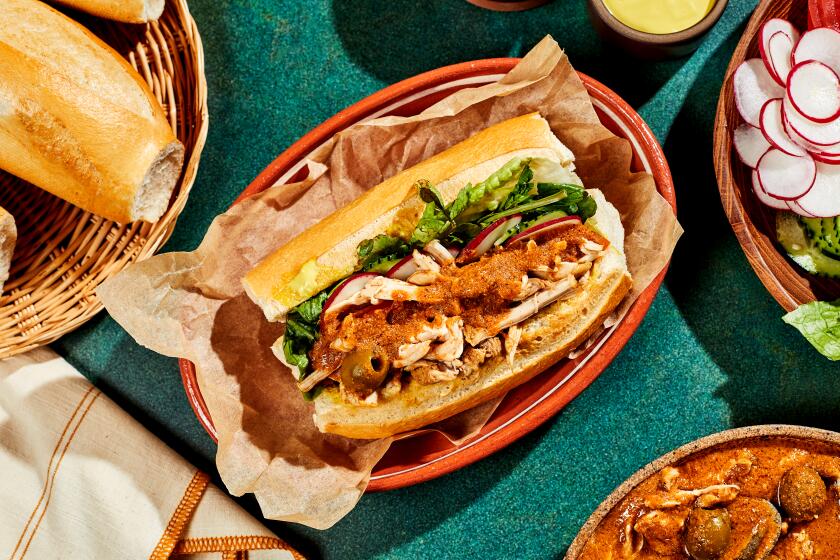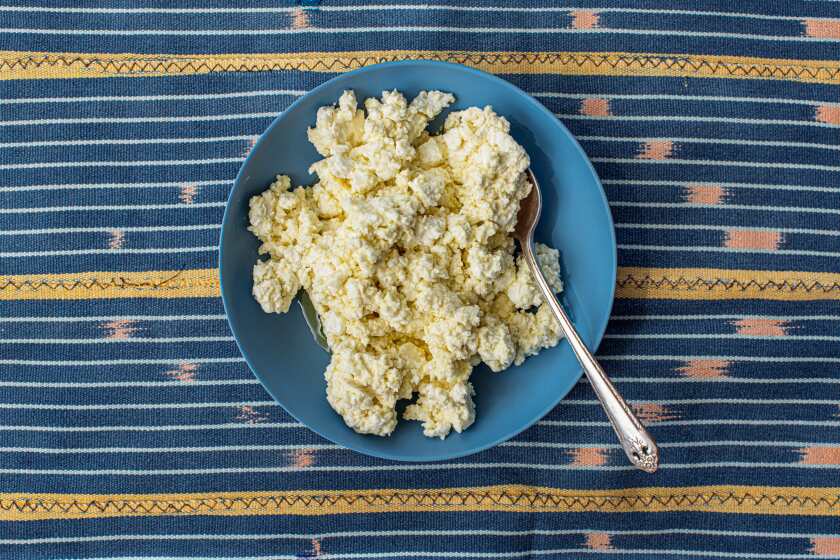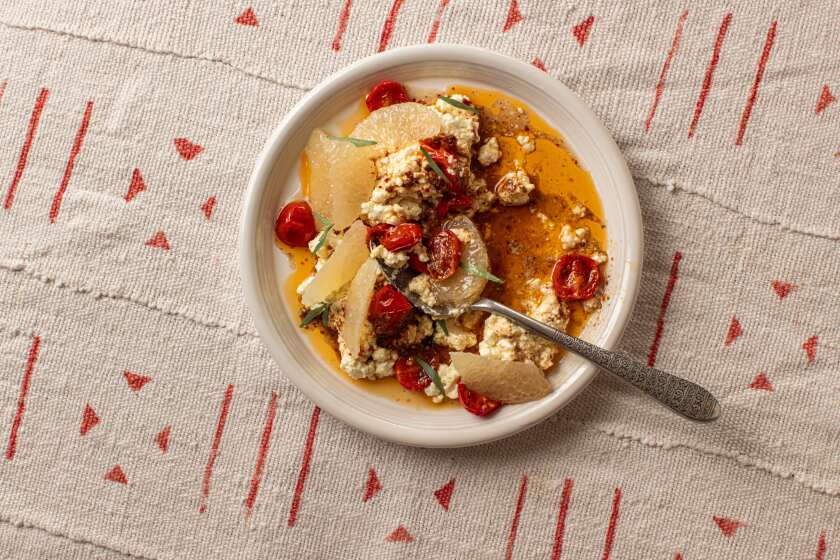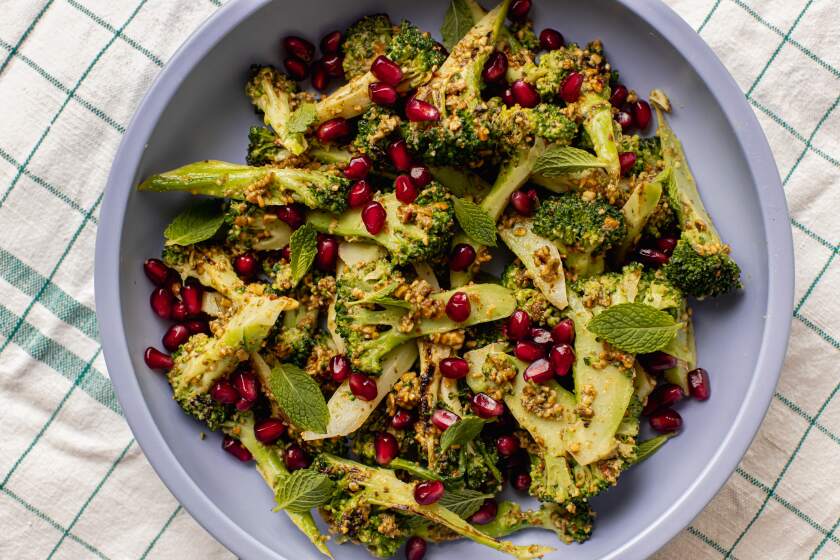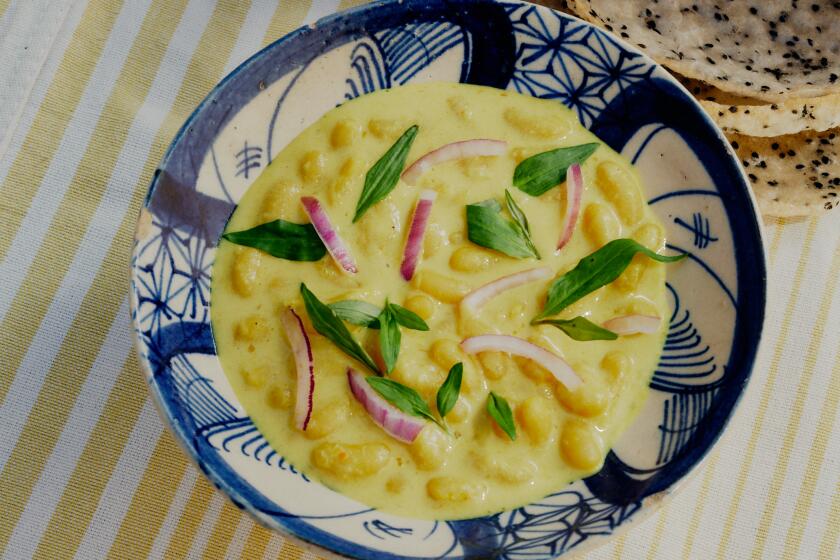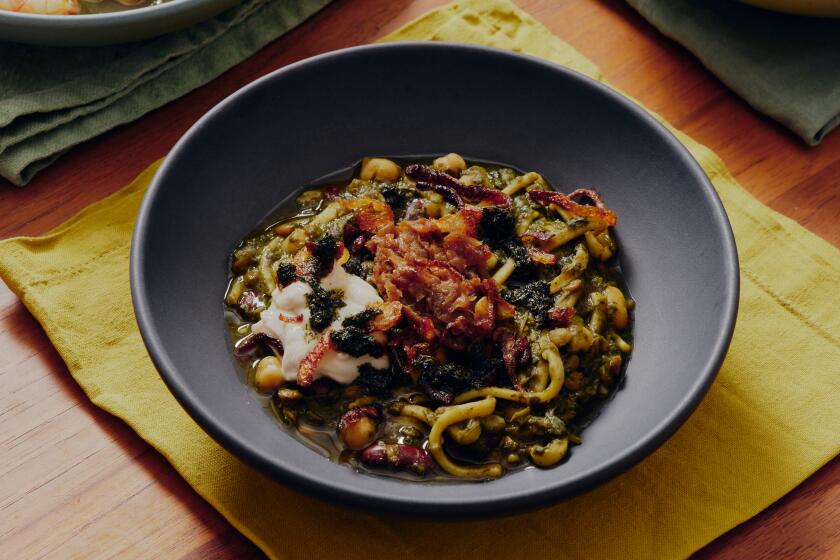Apple latkes
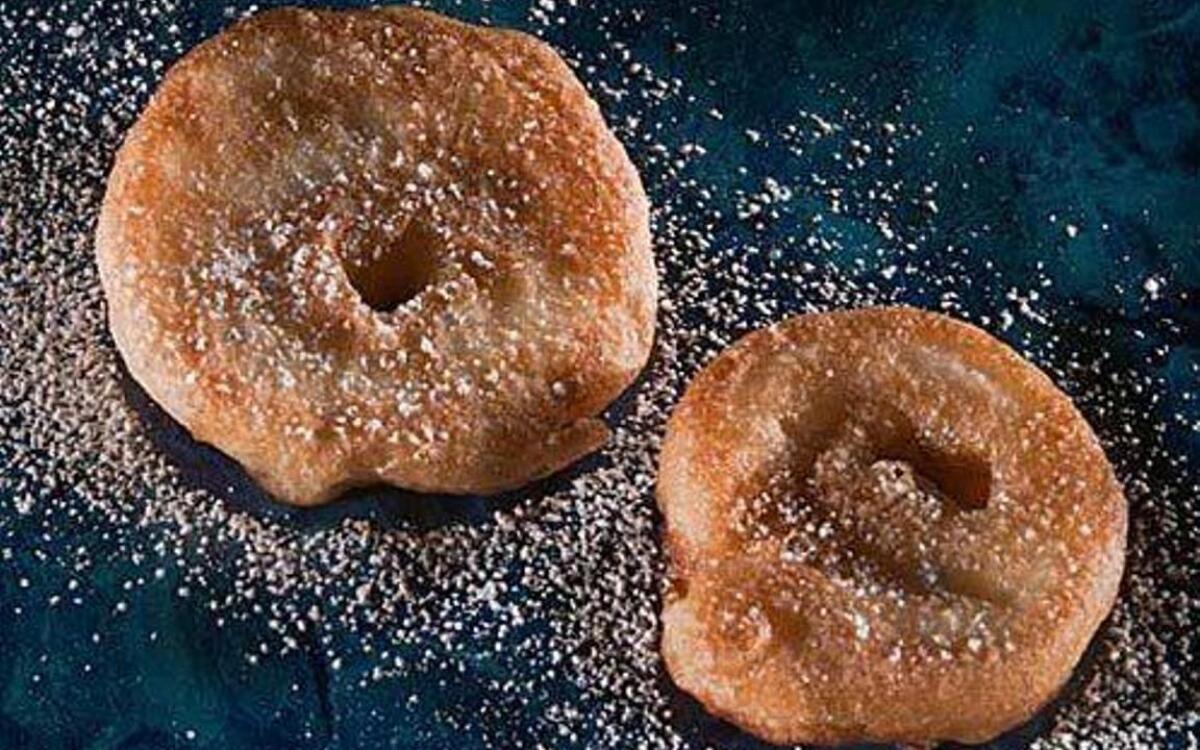
This is a Hanukkah specialty. The apples are macerated in brandy, which gives them a wonderful flavor, and the batter is very light. You can also use beer or milk instead of water for the batter.
From the story: The holiday where oil is the star
Core and peel the apples and cut each into 4 thick slices. Place them in a shallow dish with the sugar and brandy, rum or liqueur, and turn them so that they are well coated. Leave for at least 1 hour, turning the slices over occasionally so that they absorb the spirit.
For the batter, beat the yolks with the oil and salt, then stir in the flour and mix well. Now beat in the water gradually and vigorously, squashing any lumps. The batter will be thick and sticky. Let stand for an hour.
Beat the egg whites until stiff, 3 to 4 minutes. Fold one-fourth of the egg whites into the batter, then fold in the rest of the whites.
Heat at least 3/4 inch of oil in a large frying pan to 375 degrees. Pat dry the apple slices (so the batter will stick to them). Dip the slices in the batter -- about 5 at a time -- making sure they are well covered. Lift each one out carefully and lower it into the hot oil. The oil must be sizzling but not too hot, or the fritters will brown before the apple is soft inside.
Fry in batches, and turn the slices over to brown both sides, about 1 1/2 to 2 minutes a side. Lift out the slices with a slotted spatula and drain on paper towels before serving. Pass the superfine sugar for everyone to sprinkle on.
Get our Cooking newsletter.
Your roundup of inspiring recipes and kitchen tricks.
You may occasionally receive promotional content from the Los Angeles Times.

